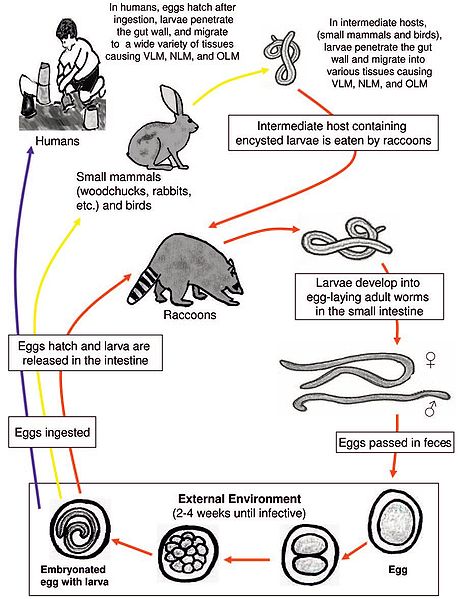Reproduction
In some parasitic species reproduction can be very complex luckily in B. procyonis it is not so much. Raccoons are the definitive host for B. procyonis which means that it is the only thing on the planet that it can reproduce in. B. procyonis lives in the intestine of raccoons where they do in fact take part in sexual reproduction after which the female can produce millions of eggs. These eggs then move out into the environment via the fecal matter of the raccoon and become infected within 2-4 weeks. After this it can go one of three ways.
1. The eggs are ingested by a raccoons. If this happens the eggs will develop into adults, perform sexual reproduction, and the cycle will repeat its self.
2. The eggs are ingested by another small mammal other then a raccoon. If this happens the larvae will not develop into adults instead they will penetrate the gut and infect different tissues with varying levels of pathology. Another thing to add is that the small mammal could also be eaten by a raccoon and then once more the cycle would repeat its self.
3. The eggs are ingested by a human. If this happens the eggs will again not develop into adults instead the larvae will again penetrate the gut and migrate to a wide range of different tissues causing all sorts of pathology.
